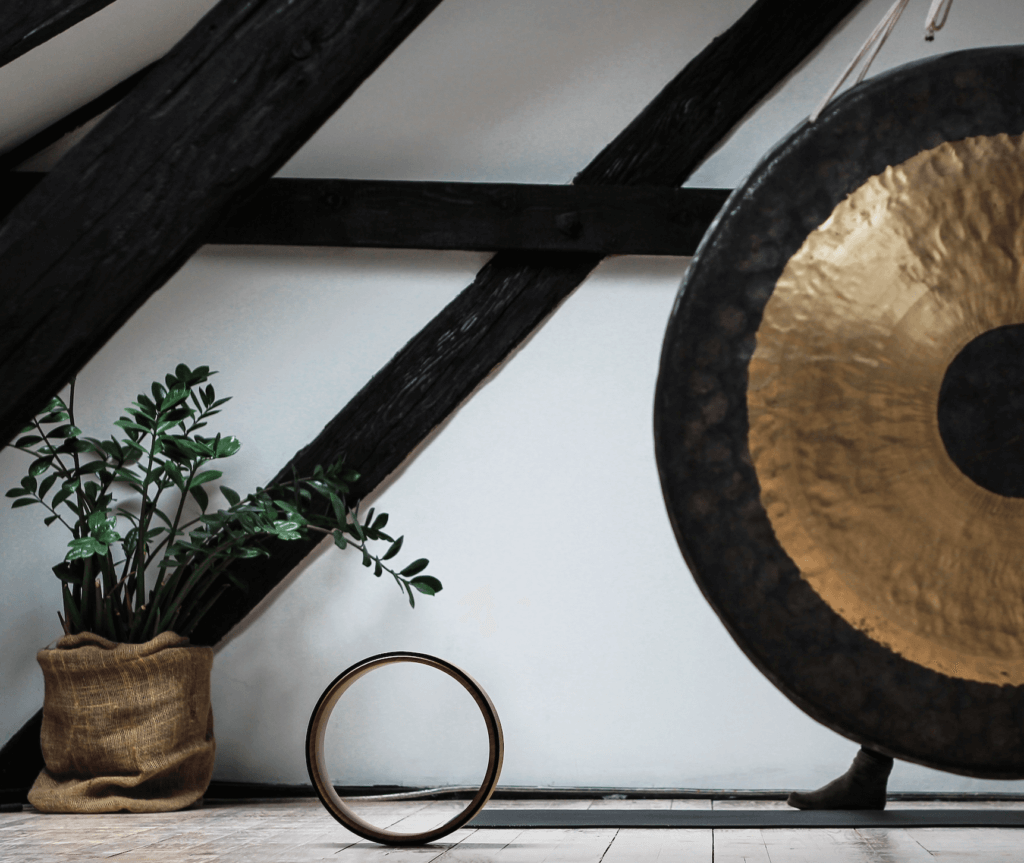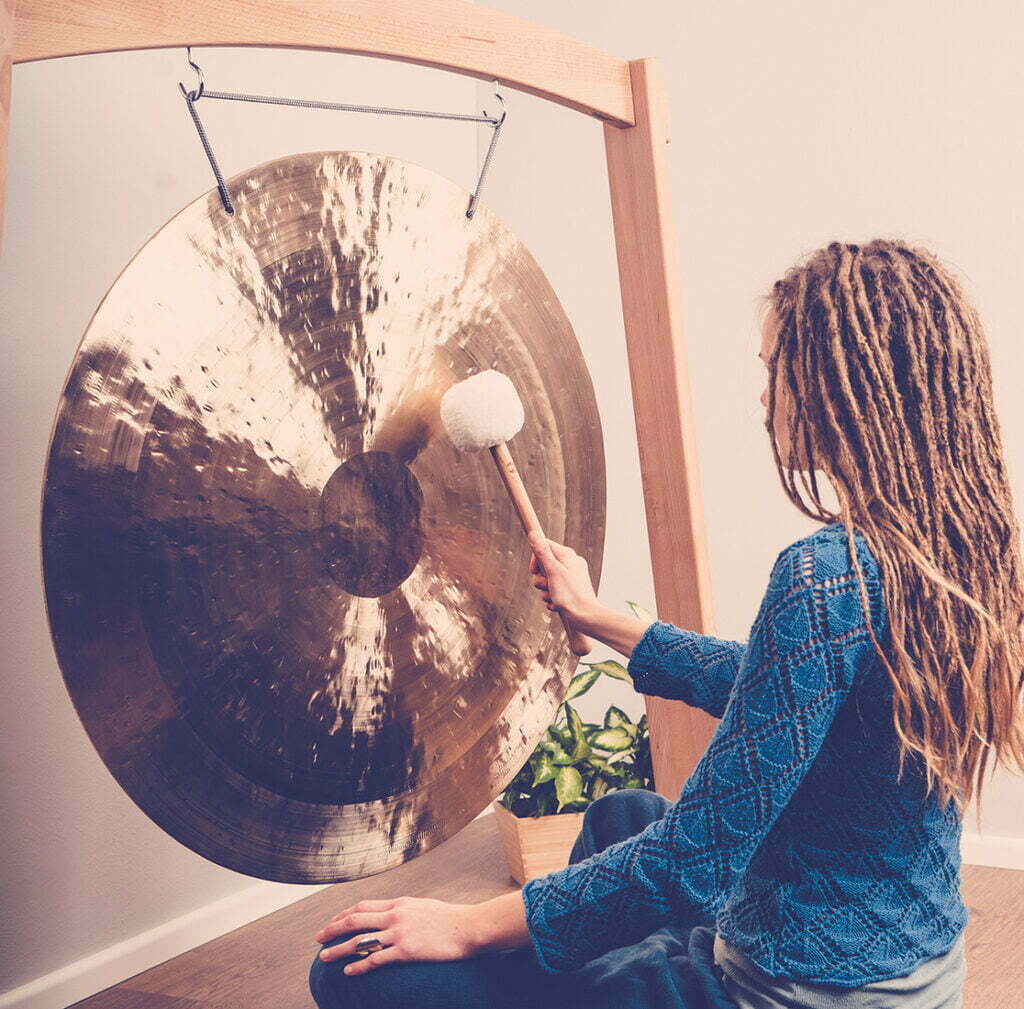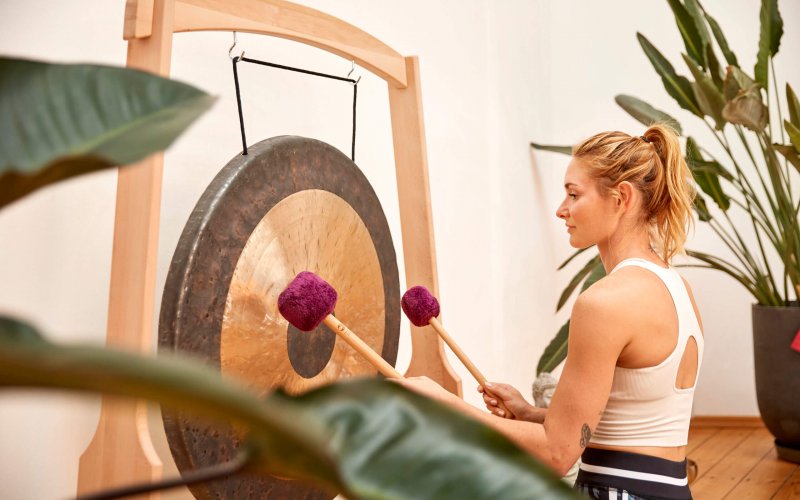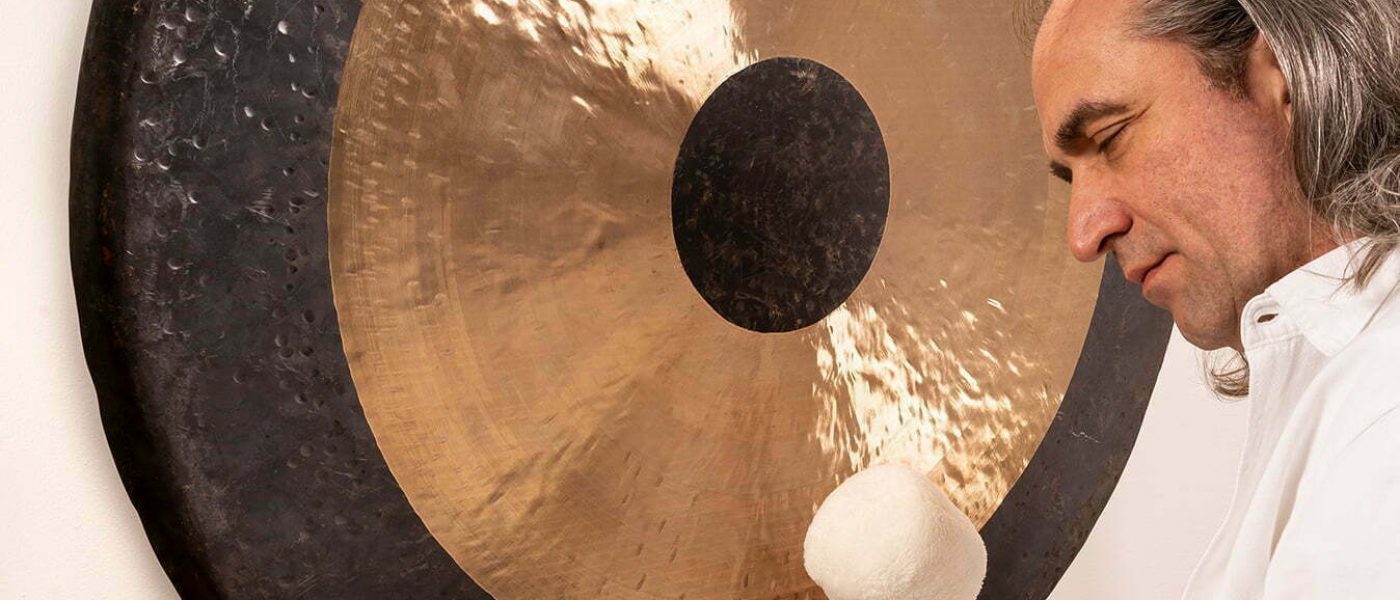
The most important facts in brief
- Gongs are basically divided into two categories: Flat gongs and humped gongs.
- The most popular flat gongs include the TamTam gong and the Feng gong.
- Gongs differ in shape, size and material used.
- The quality and workmanship of the gong significantly determines its sound.
- The gong is very versatile: there are different areas of application in which the instrument can be an asset.
What is a gong and where does it come from?
The gong is an instrument that originated in Asia. It was used in rituals, ceremonies or even by monks. Today, the gong can be found throughout Europe. The instrument is not only used in classical music or in the orchestra – the sound of the gong also blends harmoniously in quite modern songs. Especially often it is used in sound work. There it provides relaxation and can bring relief from many ailments.
To find out if the gong is basically the right instrument for you and your purposes, we have gathered some classic applications.
Areas of application of the gong:
- Use in Peter Hess® sound massage and Peter Hess® sound methods
- Sound exercises for self application
- Sound and fantasy journeys
- Concerts
- Accompaniment in meditation and yoga
The gong consists of a round metal plate, which can be completely flat or slightly curved. The plate is hammered, rolled and finished in a complex process. Only when all the process steps have been completed can the gong’s unique tones be produced. The process is elaborate and it also shows how much dedication and attention to detail goes into this often still underestimated instrument.
After completion, the machined metal disc is attached to a gong stand with a bracket so that it can vibrate freely and the sound can develop optimally.
How to find the right gong for you
- Decide for what purpose you want to use the gong predominantly.
- Listen to different gong samples online to find out which tones and frequencies you like.
- Pay attention to quality and check in particular the materials used and the manufacturing process – both have a significant effect on the sound.
- Set a budget range that you want to invest in your new instrument.
- If you are unsure, talk to an expert and get advice on the different types of gongs.
What are the types of gongs?
Gongs come in a wide variety of sizes. Due to the shape and the use of different materials, they offer a very wide range of sounds. Depending on their nature and origin, they are divided into different categories or subcategories.
These two types of gongs are among the best known instruments. The flat gong, as the name suggests, has a rather flat disc whereas the humped gong is clearly curved in the middle.
Good to know
Basically, we can distinguish between two categories: the flat gong and the hump gong.
Tones and sound of the gong
The sound of the gong is created when you strike it in the middle or slightly offset with a Gong Mallet. Depending on the type of gong and the force with which it is struck, deep, powerful and voluminous tones unfold, or bright, clear and almost shrill tones.
In Peter Hess® sound practice, gongs with a wide tonal openness and sound development are used, which have a wide range of frequencies and a great richness of overtones.
What is a flat gong?
The flat gong is bent around the edge and consists of a slightly curved and flat disc. Compared to the TamTam gong, however, the curvature is relatively flat, which makes it easier for vibrations to propagate into the surface. It is struck in the middle or slightly beside it – for example with a gong driver or gong mallet.
A flat gong is well suited for energetic cleaning of rooms or for use in sound therapy. Its sound is voluminous and when struck with a soft mallet its deep fundamental unfolds. When struck hard, it begins to vibrate and can develop an enormous volume.
The flat gongs are further divided into feng g ongs and tam-tam gongs.
What is a TamTam Gong?
TamTam gong, also known as Chinese temple gong, is made of high quality bronze alloy. Similar to the traditional production of a singing bowl, a disc is forged from a blank in a complex forging process.
The quality of the raw materials, the metal composition and the actual manufacturing process are decisive for the sound and vibration behavior.
The TamTam gong has a typical curled edge, which gives the gong surface its tension. This production step creates the typical sound of this instrument. Here we find parallels to the tensioning of a drum.
Then the surface is processed, giving the gong its typical golden ring, with the black edge and center. The basic tuning is carried out via the turned surface and by targeted hammer blows in the center of the bronze disc.
There are TamTam gongs in different sizes. Within the framework of the Peter Hess® sound methods and during corresponding sound journeys, instruments with a diameter of 80 to 110 cm are usually used. The sound character of the TamTam gong is very voluminous and ranges from very low to rather higher tones. Different mallets can be used to elicit a wealth of different sounds, sometimes reminiscent of a deep rumble of thunder, the sound of entire choirs, or even the song of dolphins.
At the same time the – compared to the Feng Gong – rather centering sound of the TamTam Gong is used specifically. This powerful instrument is quick to make sound, and all too easily tempted into careless handling. But to play this archaic instrument responsibly and purposefully requires a thorough introduction, a lot of practice and great mindfulness. This and a guided and reflected self-experience is therefore an important part of our Gong seminars at the Peter Hess® Institute.
Sound of the TamTam gong
- Voluminous and centering
- Ranges from very high to very low tones
- From the roll of thunder to the singing of entire choirs
What is a Feng Gong?
The Chinese feng gong, also known as the “wind gong” because of its sound characteristics, is an almost flat disc made of polished bronze. The correct metal composition of the bronze alloy and the manufacturing process is crucial for the desired sound effect.
Note
Within the Peter Hess® sound methods only feng gongs made of a high quality bronze alloy are used to guarantee a high quality sound and vibration.

The manufacturing method also plays an important role in terms of quality. A gong made of rolled bronze sheet does not give a usable sound quality. Therefore, only those gongs are used that first gain their shape from a thick bronze disc by machine hammering, and then are forged and hammered by hand.
Because only through the intensive forging process, the metal structure is rolled through, achieving the desired sound quality. The surface is then turned until the typical shiny golden appearance is created, to which this gong also owes another name as “sun gong”. The manufacture and shape of this instrument give it a slight spread of sound, so that it begins to vibrate powerfully when played harder. This causes the surrounding air to move strongly and the typical “fluttery” sound spreads.
This type of gong comes in a wide variety of sizes. Within the Peter Hess® sound methods, mainly Feng gongs with a diameter of 40-55 cm are used.
Sound of the feng gong
- Powerful and intense
- Typical fluttery sound
What is a humpback gong?
The humpback gong, sometimes called Thai gong, is especially widespread in Southeast Asia. It is available in different sizes and is characterized by a very clear bulge in the center. Unlike the flat gong, it is struck only in the middle. Its sound is warm and calm and, compared to the tam-tam gong, does not swell after being struck, but develops a muted and floating tone. In addition, the humpback gong has a certain pitch – this is explicitly not desired with a flat TamTam gong.
What types of gongs are available at Peter Hess?
At Peter Hess, we offer feng gongs and tam tam gongs in a variety of styles, so you can quickly find the right instrument for you and your needs. All the gongs we have been selling since 1989 come from our long-term partners and go through several tests. Only selected instruments are put on the market. Gongs are valuable instruments due to the high price of metal and their complex manufacturing process.
In the Peter Hess sound practice, these two types of gong in particular are used. They must meet certain criteria that are essential for targeted use. Of course you can also use our gongs for other purposes – be it for fantasy journeys, to accompany meditations or as a musical instrument.
Note
If you are still unsure which gong is right for you, just contact us and let our team advise you.

